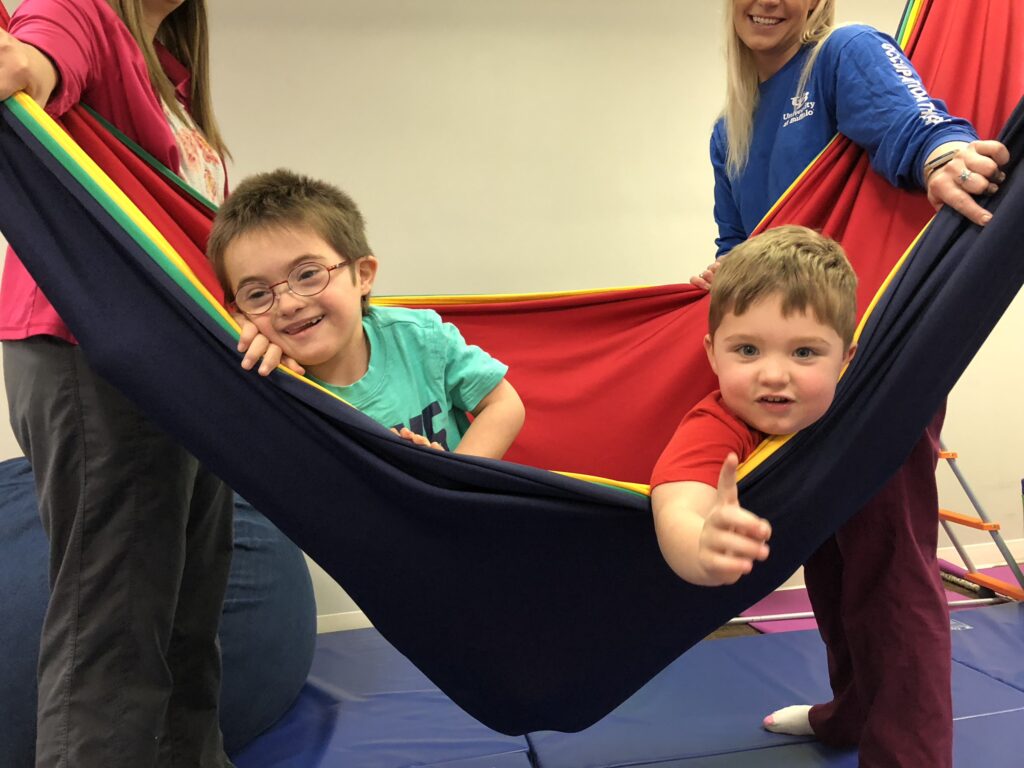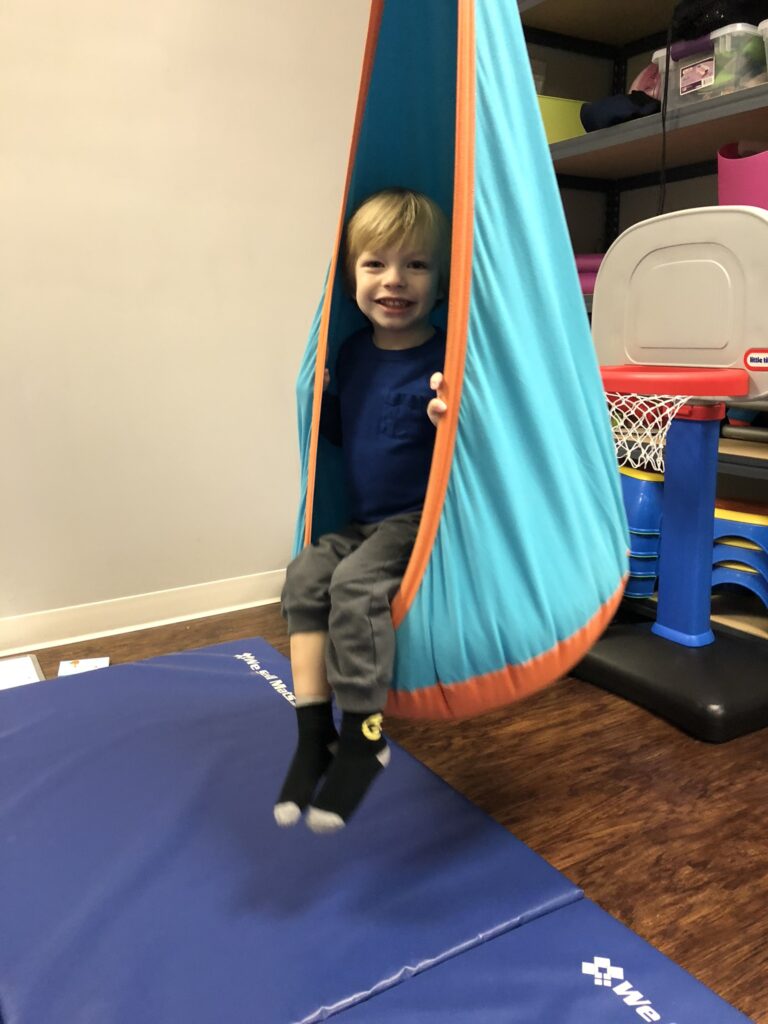What is the Vestibular System?
The Vestibular system helps our body interpret movement in relation to gravity (how fast you are moving, in what direction you are moving and whether or not you are moving at all). Vestibular information is gathered from receptors in the inner ear known as the semi-circular canals and otolith organs. As we move, these receptors work together to send signals to the brain that control our movements, balance, and orientation in space. As our brain processes the vestibular input, it provides us with a fluid and controlled motor output.
How do I know if my child has deficits in Vestibular Processing?
If your child…
- Is fearful of movement like swinging, riding in the car, tilting head back for hair washing
- Avoids or moving cautiously on items at the playground
- Is fearful when feet leave the ground/ fear of falling
- Has a fear of going up/downstairs
- Is unable to maintain age-appropriate seated task attention
- Seems to move quickly between tasks, bouncing from item to item around the room
- Appears uncoordinated or clumsy, falls frequently
- Frequently moves through environment unaware of danger, impulsively jumping or running

What happens when there are problems with Vestibular Processing?
The Vestibular system provides the foundation for development and works closely with our other sensory systems (touch, vision, auditory, proprioception). Every person processes, organizes, and responds uniquely to sensory stimulation, but if a child has difficulty processing vestibular input it can greatly affect many aspects of life. Children with a dysfunction in vestibular processing may be hypo or hyper responsive to movement. This can impact their ability to have an expected, appropriate motor output to vestibular input required to maintain balance, complete coordination tasks (dressing, cutting, jumping, bike riding, ball catching), tolerating movement tasks, maintain static and dynamic postural control, easily learn to read and write, as well as sustain seated attention.

How can Occupational Therapy help with Vestibular Processing?
At Mount Pleasant Pediatric Therapy, our occupational therapists are skilled in evaluative and treatment techniques in the sensory integration approach. An occupational therapist will complete an extensive evaluation of all your child’s sensory systems and how they collectively impact your child’s participation in daily life at home and in the community. Your occupational therapist will provide sensory integration treatment techniques in one of our many sensory gyms as well as work with you to suggest specific sensory strategies to help your child organize and process vestibular input. The treatment plans and recommendations our therapists make are individualized to best meet the needs of your child within their natural environment.
